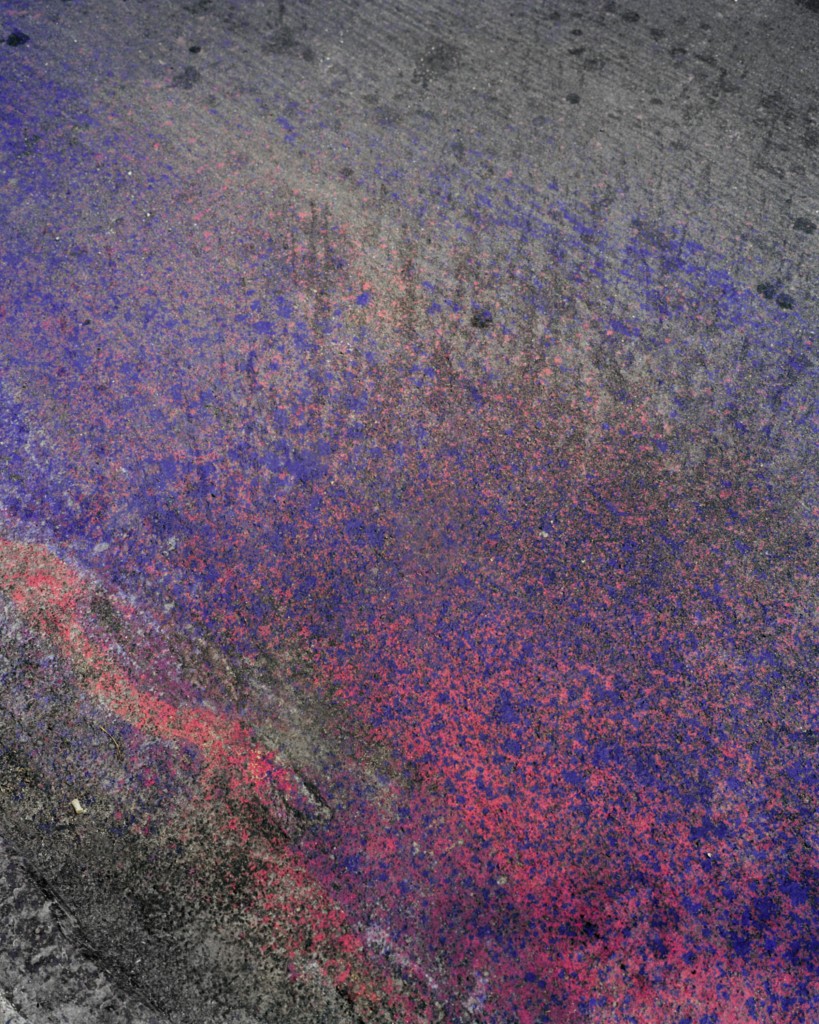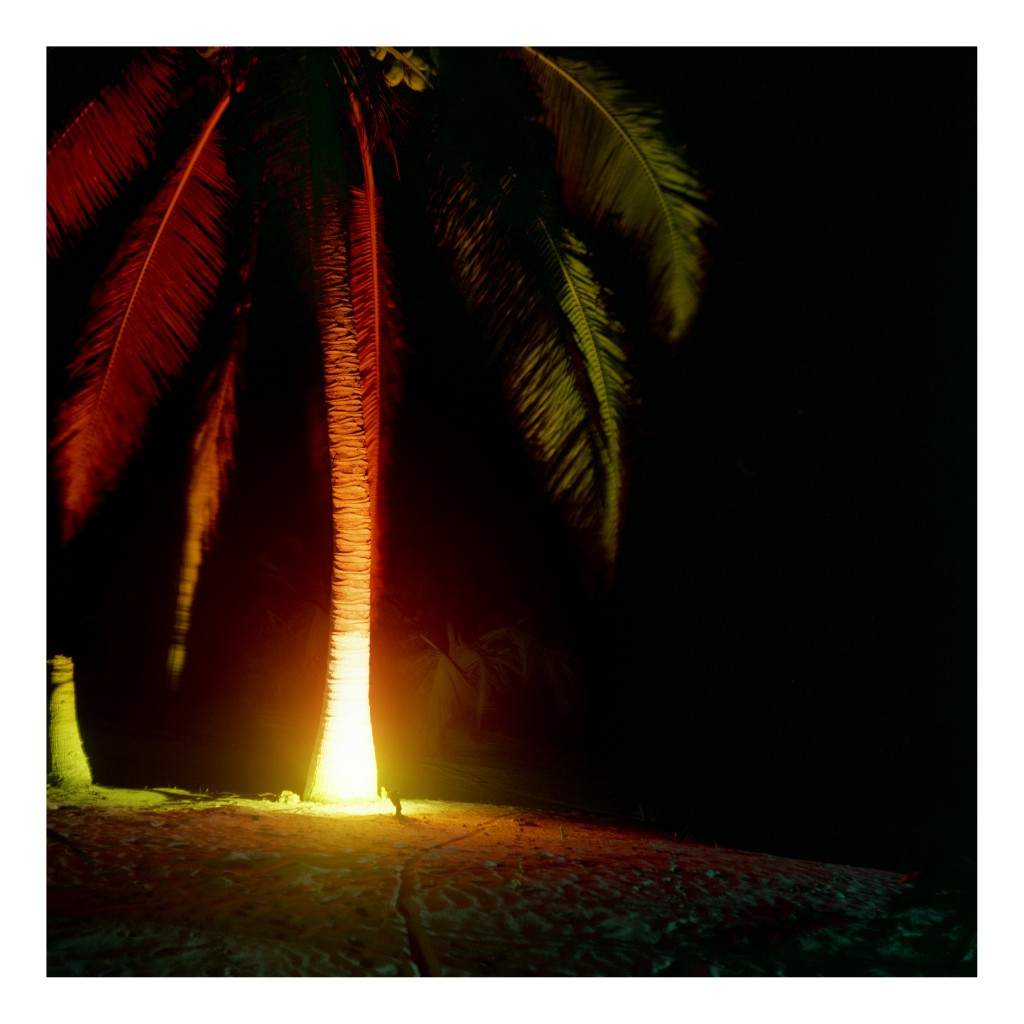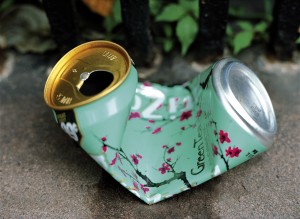Through the Plain Camera: Small and Shapely Pleasures in Contemporary Photography
Sarah Kaufman and Rebecca Robertson
The invention of photography provided a radically new picture-making process—a process based not on synthesis but on selection. The difference was a basic one. Paintings were made—constructed from a storehouse of traditional schemes and skills and attitudes—but photographs, as the man on the street put it, were taken.
—John Szarkowski, The Photographer’s Eye, 1966
While the division between photography and painting is no longer hotly debated, the tension between synthesis and selection has shifted to a split within photography itself. No longer contending for status with other kinds of artists, photographers who construct their work using staged, found, and digitally manipulated imagery are now compared with those who do not. Photographers are “abandoning the spontaneous approach as well as the idea of taking snapshots from real life, and choosing staging to express their views on human nature” (Herschdorfer 2010). Changing trends have allowed photography to be considered within the same criteria as more overtly constructed art forms, as the boundaries between media have all but collapsed.
And yet, aspects of photography have included synthesis and selection since the medium’s invention—and have swung in and out of fashion. As early as 1840 there were staged, fictive photographs such as Hippolyte Bayard’s Self-Portrait as a Drowned Man and Henry Peach Robinson’s famous composites of multiple negatives, which he began making in the 1850s. Later in the century the Pictorialists composed romantic scenes with soft-focus haze and textured surfaces to approximate the other graphic arts. These approaches claimed photography as art by imbuing it with the characteristics of painting and separating it from everyday uses. The clean, sharp focus of Modernist photography, championed by Alfred Stieglitz early in the twentieth century and later by Szarkowski, proposed instead that the formal qualities of a photograph qualified it as art. In turn, Modernism was criticized by a generation who questioned photography’s supposed truth and neutrality. These Postmodernists created photographs that explicitly referenced their own means of production and embraced appropriation and artifice. Among others, artists such as Sherrie Levine and Jack Goldstein, who were included in the influential Pictures exhibition of 1977, questioned the role of the author by reusing existing imagery.

Shen Wei
Fountain, Xi’an, Shaanxi Province, from “Chinese Sentiment”
24 × 30in., c-print
2009
Image courtesy of the artist and Daniel Cooney Fine Art, New York.
Today, in the wake of Postmodernism, photographers who select from the world confront the same kinds of biases their predecessors did in the face of painting. In his essay “It’s Art, But Is It Photography?” critic Gerry Badger argues that “selective” photography is punished for failing to transform its subject overtly. He writes that for many, the “photographic act in its basic simplicity, is…not enough of an art.” The plain photograph’s use as a tool—in photojournalism and surveillance, and as a record or a snapshot—reinforces doubt about the unmanipulated photograph’s status as art. Nevertheless, the mode of selecting from the world remains a rich vein for aesthetic exploration and personal expression.
While trends have swung sharply toward the synthetic in the last few decades, this exhibition celebrates contemporary photographers who shoot the world as they find it. Original photographers, wrote Szarkowski in his influential introduction to William Eggleston’s Guide, find “new patterns of facts that will serve as metaphors for their intentions,” resulting in a “new pictorial vocabulary, based on the specific, the fragmentary, the elliptical, the ephemeral, and the provisional” (Szarkowski 1976). Jessica Backhaus, Elizabeth Fleming, Vita Litvak, Christian Patterson, and Shen Wei continue to work with and widen that vocabulary. They embrace and exploit the fundamental characteristics of the medium, which Szarkowski defined as The Thing Itself, The Detail, The Frame, Time, and Vantage Point. In other words, all photographers decide where to place the border of the picture—what to include and what to exclude—how wide and for how long to open the lens, and the exact position of the camera. Backhaus et al. are sensitive to the medium’s formal characteristics and use them, as Szarkowski suggests, to pattern the facts of the world and craft metaphors.
Images, continues Szarkowski, can be “irreducible surrogates for the experience they pretend to record, visual analogues for the quality of one life, collectively a paradigm of a private view, one would have thought ineffable, described here with clarity, fullness, and elegance.” They are, he writes, “a concrete kind of fiction.” The artists in this exhibition interact directly with the world to take photographs that do not simply copy or recreate reality but make and remake it. They may photograph the world as they find it, but what they generate is fictive, metaphoric, allusive, and deeply personal.

Christian Patterson
Splash for Dash from “A Concrete Kind of Fiction”
30 × 24in., archival inkjet print
2009
Image courtesy of the artist.
Investigating scale, visual layering, and surface, Christian Patterson’s ongoing series, A Concrete Kind of Fiction, embodies the idea that a vocabulary made up of the specific and ephemeral, when purposefully selected, can surpass the descriptive implications of photography. His title, borrowed from Szarkowski, embraces photography’s tension with the real: the notion that even through a plain camera, depictions of the world as it is are inherently fictional.
“There is no specific geographic range to the series, and there is no specific subject matter,” says Patterson. Instead, his images relate to one another in the way they use photographic language. Isolating a particular frame from its greater context, he trusts texture, color, and composition to point out relationships among disparate collections of phenomena. Bright, almost fluorescent pigments weave throughout the series. The mottled yellow-green of Van Window appears again in the reflection of trees in a small, upward tilting vanity and yellow cloth in Magic Mirror. Out of focus, the reflection takes on a texture similar to the painted van window. Both swaths of intense color question whether we are looking at a surface or into a depth. Patterson also deals with questions of transparency in unlikely places. Splash for Dash depicts a spray of bright paint on grayish, rough asphalt, the pink and purple splatters becoming a screen on the surface of the photograph. Stage Floor shows brightly colored pieces of tape ticking off points over a dark, dirty carpet. These spots of color seem to float on top of a ground that then in turn recedes. Marks left behind by recently removed tape reveal lighter patches that have been protected from built-up grime. Together the two photographs point out the camera’s ability both to record and distort space. Patterson’s fictions employ the nature of photographic seeing and open the dialogue to include questions about perception itself.
Like Patterson, Vita Litvak creates meaning through sequence and formal relationships but her particular vision has a dreamlike quality. A sunset-lit landscape of messy kudzu appears next to a crisp Italianate porte cochere. The eeriness of these scenes is heightened by their odd exchange: unruly nature and man-made order compete while sharing a dusty pink glow. Litvak was born in a Moldavian country town, and her immigration to Philadelphia at age 12 greatly influenced her voice. She says that her practice is “informed by the experience of a diaspora’s fractured identity and infused with nostalgia and longing.” We Will Also Melt Someday pictures a block of ice perched on a stone wall in bright sunlight, a metaphor for imminent loss and change. A patch of wet dirt below the wall looks to be spreading. The pond just behind ripples with a luminous, milky green, as if calling the ice to join it.
In her artist statement Litvak writes about the world as a stage that hosts performances for her camera. The work translates these scenes into equivalents for her thoughts, opening the door for further interpretation. Litvak cites Thomas Weski who, writing about Eggleston, states that photography can not only describe situations and objects, “but can endow them with a deeper meaning and lets them transcend themselves with a disturbing force.” Looking out into the night of Backyard Apparition, we are taken through an open window frame, past silhouetted trees, and up to an inexplicable red emanation that seems to hover in front of a picket fence. Beyond the fence, homes and yards are layered with an incandescent glow that radiates from unshaded windows. Litvak and her camera serve as a medium through which the real can pass and be transformed. The photographic prints that emerge on the other side eloquently show us what was there, and then some.

Vita Litvak
The Palm at the Edge of the Mind from “The Day I Set the Sea on Fire.”
10 × 10in., LightJet print
2006
Image courtesy of the artist.
Elizabeth Fleming’s work similarly exudes a sense of the surreal in its subject matter and composition, imbuing ordinary life with mystery. Her collection Life Is a Series of Small Moments examines her children’s universe and transforms peculiar domestic scenes from their New Jersey life into allegory. Weird visual occurrences in the series Strange Happenings explore a fascination with the supernatural. Both bodies of work reveal an obsession with looking at odd moments within household life, and embrace their potential for expression. In Gram, a patch of diffused sunlight grazes a painted portrait, the reflected glow uncannily obscuring the sitter’s face. Spare framing accentuates the curiosity of this moment, and a low vantage point raises a sense of childlike awe.
Fleming’s photographs revel in and transcend parenthood. In Babyproof, a gastronomic still life in muted earthtones, a can of olives and other store-packaged goods sit on a dated Formica counter. A glaze of spilled water is held in tension by the worktop’s rubber bumper-tipped metal lip. One can imagine the frustration of sopping up the mess, yet Fleming presents the scene as delicate and inviting. She has said, “I look for those synchronistic moments where I discover the narrative thread contained in a single image, capturing chance circumstances as I seek to raise the quotidian to a thing of wonder.” She crawls under a bed to ponder a dust bunny and considers the potential in what looks like a child’s pee stain on a sofa. As Szarkowski wrote about Eggleston, the work endows “the least pretentious of raw materials with ineffable dramatic possibilities.”
“It would be marvelous to think that the ordinary, vernacular life in and around Memphis might be in its quality more sharply incised, formally clear, fictive, and mysteriously purposeful than it appears elsewhere” (Szarkowski 1976). Like Eggleston’s Tennessee, Shen Wei’s China is as much a quiet and mysterious reflection of the artist as it is a portrait of a place. Wei grew up in Shanghai and came to the US to study art in 2000; the images in his series Chinese Sentiment were taken during trips home nearly a decade later. Shot in Shanghai and the large interior cities of Xi’an and Chongqing, the selection on view here is specific to a particular moment in a changing culture and depicts common details from public and private life. The pictures show a side of China unrelated to its recent growth and its relationship with the West. Instead of factory workers or high-rises, the views are largely close and domestic. Damp, melancholy, familiar but strange, all are shown in a lush, cool light. A tabletop in Shanghai, covered in glass, sandwiches a layer of crumpled family snapshots in Grandma’s Table. On its corner, a cloth is draped over a small pile of unidentifiable objects. A crack in the glass has been carefully repaired with tape. Other works depict packaged food in its natural habitats. A box of dried pears from Xinjiang, an autonomous region in the west of the country, is wrapped in a single wrinkled red ribbon and rests on a pink bedspread, a welcome gift or a souvenir and reminder of China’s vast size.

Jessica Backhaus
Green Tea in Brooklyn from “What Still Remains”
20 × 24in., c-print
2006
Image courtesy of Laurence Miller Gallery, New York.
Like Wei, Jessica Backhaus uses photographs to ask questions about what it means to depict and interpret a location. Her images carefully observe signs of human action. Her series Jesus and the Cherries explores homes in the West Pomerania region of rural Poland, where her German family bought a farmhouse in the early 1990s. The images record traces of religion, agriculture, and the past in warm, comfortable living spaces. Other series range more broadly, singling out arrangements of color and form in nature, trash, filtered light, and the optical qualities of water. Spilled Coffee and Green Tea in Brooklyn both show disposable drink containers up close on the sidewalk. Abstracted and isolated, their vivid colors ask the viewer to reconsider the common—the teal and magenta pattern printed on the crushed paper cup and the flowering branches on the Arizona Iced Tea can are surprisingly beautiful and delicate. In other works, Backhaus records tiny monuments made by absent creators—a paintbrush soaking in a glass of cloudy pink water, white flowers framing kitchen sponges stacked on a stone ledge.
“Sometimes you don’t have to show everything—a detail can be much more revealing and significant,” says Backhaus. Analyzing Backhaus in Foam magazine, Eric Miles relates her work to the surreal, arguing that “even the most ordinary objects are possessed of a certain but intangible intensity that is in most cases dulled by everyday use and utility.” The artist can “reanimate this latent intensity.” In Clips, a herd of clothespins has gathered in front of a cobwebbed window, all wildly larger than life in the print. Up close, the brightly colored plastic clips contrast with one made of faded wood and allude to a low-level tension between the old and new that runs through her work.
Backhaus’s close-ups—like Litvak, Wei, Patterson, and Fleming’s straightforward but selective interactions with the world—use approaches that have been around since photography’s beginning. While so much new photography seems to engage abstractly, ironically, at a distance, the photographers in this exhibition find meaning in direct, personal experience. With this exhibition we hope to show a contemporary alternative, not newer or older than the ideas explored by synthetic photography, but one that celebrates and advances what the plain camera can do.
Bibliography
- Badger, Gerry. 2010. The Pleasures of Good Photographs. New York: Aperture Foundation.
- Benjamin, Walter. 1968 [1955]. “The Work of Art in the Age of Mechanical Reproduction.” In Illuminations. Edited and with an introduction by Hannah Arendt. Translated by Harry Zohn. New York: Schocken Books.
- Chandler, David. 2011. “Weightless Light.” In Illuminance, by Rinko Kawauchi. New York: Aperture Foundation.
- Goldberg, Vicki. 2011. “The Complex Importance of Simple Things.” In Sarah Rhymes with Clara, by Susan Paulsen. London: Steidl.
- Grundberg, Andy. 1999. Crisis of the Real. New York: Aperture Foundation.
- Herschdorfer, Nathalie. 2010. “Discovering the Shifting Terrains of Photography.” In reGeneration 2: Tomorrow’s Photographers Today, by William A. Ewing and Nathalie Herschdorfer, 15. New York: Aperture Foundation.
- Hessler, Peter, and Shen Wei. 2011. Chinese Sentiment. New York: Charles Lane Press.
- Klein, Alex, ed. 2010. Words Without Pictures. New York: Aperture Foundation.
- Litvak, Vita. 2011. Statement from the artist’s website, vitalitvak.com. Accessed August 19, 2011.
- Miles, Eric. 2009. “Reverence and Wonder: On Jessica Backhaus’ One Day in November.” Foam (June 2009).
- Moschovi, Alexandra. 2008. “Changing Places: The Rebranding of Photography as Contemporary Art.” In Photography Between Poetry and Politics, edited by Hilde Van Gelder and Helen Westgeest. Leuven: Leuven University Press.
- Newhall, Beaumont. 1964 [1949]. The History of Photography, New York: Museum of Modern Art.
- Patterson, Christian. 2011. Interview with the artist conducted by Sarah Kaufman.
- Smithson, Aline. 2009. Elizabeth Fleming from website LensScratch. Accessed July 28, 2011.
- Szarkowski, John. 1978. Mirrors and Windows: American Photography since 1960. New York: Museum of Modern Art.
- ________. 2007 [1966]. The Photographer’s Eye. New York: Museum of Modern Art.
- Szarkowski, John, and William Eggleston. 2002 [1976]. William Eggleston’s Guide. New York: Museum of Modern Art.
- Weski, Thomas. 1994. “Expeditions to Explored Areas.” In Stephen Shore: Photographs 1973–1993, by Stephen Shore, 22. Munich: Schirmer Art Books.
- ________. 2003. “Draft of a Presentation.” In Los Alamos, by William Eggleston. Zurich: Scalo.